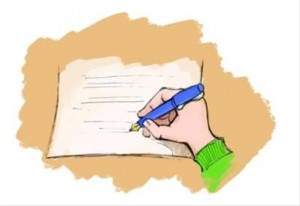本文提供了写好essay的10个简单步骤,可复制性很强,大家可以了解一下!一定会对你写essay有所帮助
Brief overview of the ten Essay Writing Steps
Below are brief summaries of each of the ten steps to writing an essay. Select the links for more info on any particular step, or use the blue navigation bar on the left to proceed through the writing steps. How To Write an Essay can be viewed sequentially, as if going through ten sequential steps in an essay writing process, or can be explored by individual topic.
1. Research: Begin the essay writing process by researching your topic, making yourself an expert. Utilize the internet, the academic databases, and the library. Take notes and immerse yourself in the words of great thinkers.
2. Analysis: Now that you have a good knowledge base, start analyzing the arguments of the essays you’re reading. Clearly define the claims, write out the reasons, the evidence. Look for weaknesses of logic, and also strengths. Learning how to write an essay begins by learning how to analyze essays written by others.
3. Brainstorming: Your essay will require insight of your own, genuine essay-writing brilliance. Ask yourself a dozen questions and answer them. Meditate with a pen in your hand. Take walks and think and think until you come up with original insights to write about.
4. Thesis: Pick your best idea and pin it down in a clear assertion that you can write your entire essay around. Your thesis is your main point, summed up in a concise sentence that lets the reader know where you’re going, and why. It’s practically impossible to write a good essay without a clear thesis.
5. Outline: Sketch out your essay before straightway writing it out. Use one-line sentences to describe paragraphs, and bullet points to describe what each paragraph will contain. Play with the essay’s order. Map out the structure of your argument, and make sure each paragraph is unified.
6. Introduction: Now sit down and write the essay. The introduction should grab the reader’s attention, set up the issue, and lead in to your thesis. Your intro is merely a buildup of the issue, a stage of bringing your reader into the essay’s argument.
(Note: The title and first paragraph are probably the most important elements in your essay. This is an essay-writing point that doesn’t always sink in within the context of the classroom. In the first paragraph you either hook the reader’s interest or lose it. Of course your teacher, who’s getting paid to teach you how to write an essay, will read the essay you’ve written regardless, but in the real world, readers make up their minds about whether or not to read your essay by glancing at the title alone.)
7. Paragraphs: Each individual paragraph should be focused on a single idea that supports your thesis. Begin paragraphs with topic sentences, support assertions with evidence, and expound your ideas in the clearest, most sensible way you can. Speak to your reader as if he or she were sitting in front of you. In other words, instead of writing the essay, try talking the essay.
8. Conclusion: Gracefully exit your essay by making a quick wrap-up sentence, and then end on some memorable thought, perhaps a quotation, or an interesting twist of logic, or some call to action. Is there something you want the reader to walk away and do? Let him or her know exactly what.
9. MLA Style: Format your essay according to the correct guidelines for citation. All borrowed ideas and quotations should be correctly cited in the body of your text, followed up with a Works Cited (references) page listing the details of your sources.
10. Language: You’re not done writing your essay until you’ve polished your language by correcting the grammar, making sentences flow, incoporating rhythm, emphasis, adjusting the formality, giving it a level-headed tone, and making other intuitive edits. Proofread until it reads just how you want it to sound. Writing an essay can be tedious, but you don’t want to bungle the hours of conceptual work you’ve put into writing your essay by leaving a few slippy misppallings and pourly wordedd phrazies..
十篇文章的写作步骤简要概述
下面是每个来写一篇文章的十个步骤的简单总结。选择在任何特定的步骤的更多信息的链接,或用蓝色导航栏左侧的进行写作的步骤。如何写一篇文章,可以浏览顺序,仿佛穿行在写作过程的十个连续的步骤,也可以通过个人的话题的探讨。
1。研究:开始你的研究课题的论文写作过程中,使自己的专家。利用互联网,学术数据库,和图书馆。记笔记,沉浸在伟大的思想家的话。
2。分析:现在你有一个良好的知识基础,开始对你的阅读文章的论点。明确要求,写出来的原因,证据。寻找弱点的逻辑,而且强度。学习如何写一篇文章,开始学习如何分析别人写的文章。
3。头脑风暴:你的文章需要你自己的洞察力,真正的写作才华。问你自己一个问题和回答。冥想用你手中的笔。散步和思考,认为直到你想出独到的见解写。
4。论文:选择你最棒的点子记在一个明确的说法,你可以写下你的整个的论文。你的论文是你的主要观点,总结在一个简洁的句子,让读者知道你要去哪里,以及为什么。它没有一个明确的论文写出好文章,几乎是不可能的。
5。概况:勾画出你的文章之前就写出来的。使用一个线的句子来描述段落的要点,并描述每个段落包含。打文章的顺序。图你的论点的结构,并确保每一段的统一。
6。简介:现在坐下来写论文。介绍应抓住读者的注意力,设置问题,并在你的论文铅。你的介绍仅仅是堆积的问题,一个阶段使读者进入文章的论点。
(注:标题和第一段可能是你的论文中最重要的元素。这是一篇写点并不总是陷在范围内的课堂。在第一段中你可以吸引读者的兴趣,或失去它。当然,你的老师,谁去教你如何写一篇文章,会读你写的论文无关,但在真实世界中,读者决定是否读你的文章,看一眼仅标题。)
7。段落:每段应集中在一个单一的想法,支持你的论文。开始段落主题句,支持主张的证据,并阐述了最清楚你的想法,你可以最明智的方式。如果他或她是坐在你面前对你的读者说。换句话说,不是写文章,谈谈你的论文。
8。结论:优雅地退出你的文章作出快速总结句,然后结束了难忘的思想,也许一个报价,或一个有趣的逻辑,或者一些行动。你有什么想让读者走开吗?让他或她知道什么。
9。MLA格式:格式你论文的正确方针。所有的见解和报价应该在你的正文中引用正确,跟着一个引用(参照)列出你信息源。
10。语言:你不做短文写作直到你擦亮你的语言通过纠正语法,句子的流量,这样的节奏,重点,调整形式,给它一个冷静的语调,和其他直观的编辑。校对直到你希望它的声音。写一篇文章可以是乏味的,但你不想搞砸的时间概念的工作你已经投入的短文写作留下几滑misppallings和大把的wordeddphrazies ..







